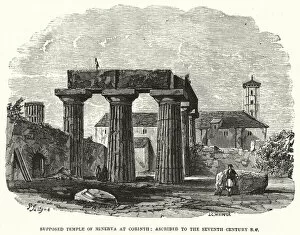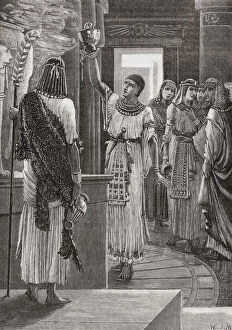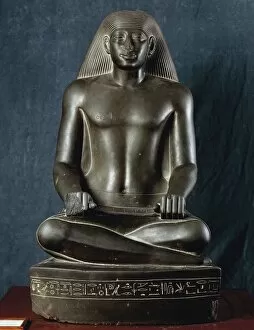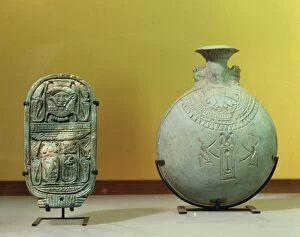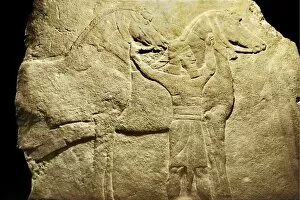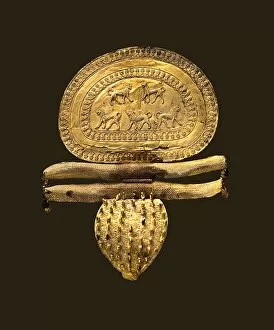Seventh Century Bc Collection
The seventh century BC was a time of great cultural and artistic achievements
For sale as Licensed Images
Choose your image, Select your licence and Download the media
The seventh century BC was a time of great cultural and artistic achievements. From the intricate gold cup of the Scythian civilization to the metope fragment with a female figure from Mycenae, Greece, this era showcased exquisite craftsmanship. The supposed Temple of Minerva at Corinth, dating back to this period, reveals architectural marvels that still captivate us today. In Tuscany, Italy, we find evidence of Etruscan civilization through the tumulus in Camucia and the burial chamber of Montagnola tomb in Sesto Fiorentino. These tombs provide insights into their funerary practices and beliefs. Greek civilization also flourished during this time as seen in the Temple of Hera (Heraion) in Perachora. Its grandeur reflects Greek architectural prowess between the 9th and 6th centuries BC. Jewelry played a significant role in ancient societies, as demonstrated by an anchor-shaped pendant found in Axioupolis, Greece. This bronze adornment showcases both beauty and symbolism. The remains of an ancient temple at Corinth further highlight the architectural wonders from this era. Ascribed to the seventh century BC, these remnants remind us of past glory and inspire awe for our ancestors' ingenuity. One intriguing story involves Wahibre Psamtik I or Psammetichus, King of Egypt's 26th Dynasty. During a feast at Hephaestus temple where golden phials were distributed for libations among twelve kings assembled there mistakenly gave eleven instead of twelve phials leading to his exile into Nile delta marshes due to misinterpretation by other kings who remembered an oracle's promise regarding pouring libations from a vessel made out bronze would grant sovereignty over all Egypt. Artistic depictions also shed light on historical events such as Elamite soldiers fleeing captured vividly on a relief from Nineveh's royal palaces around 645 B. C.

